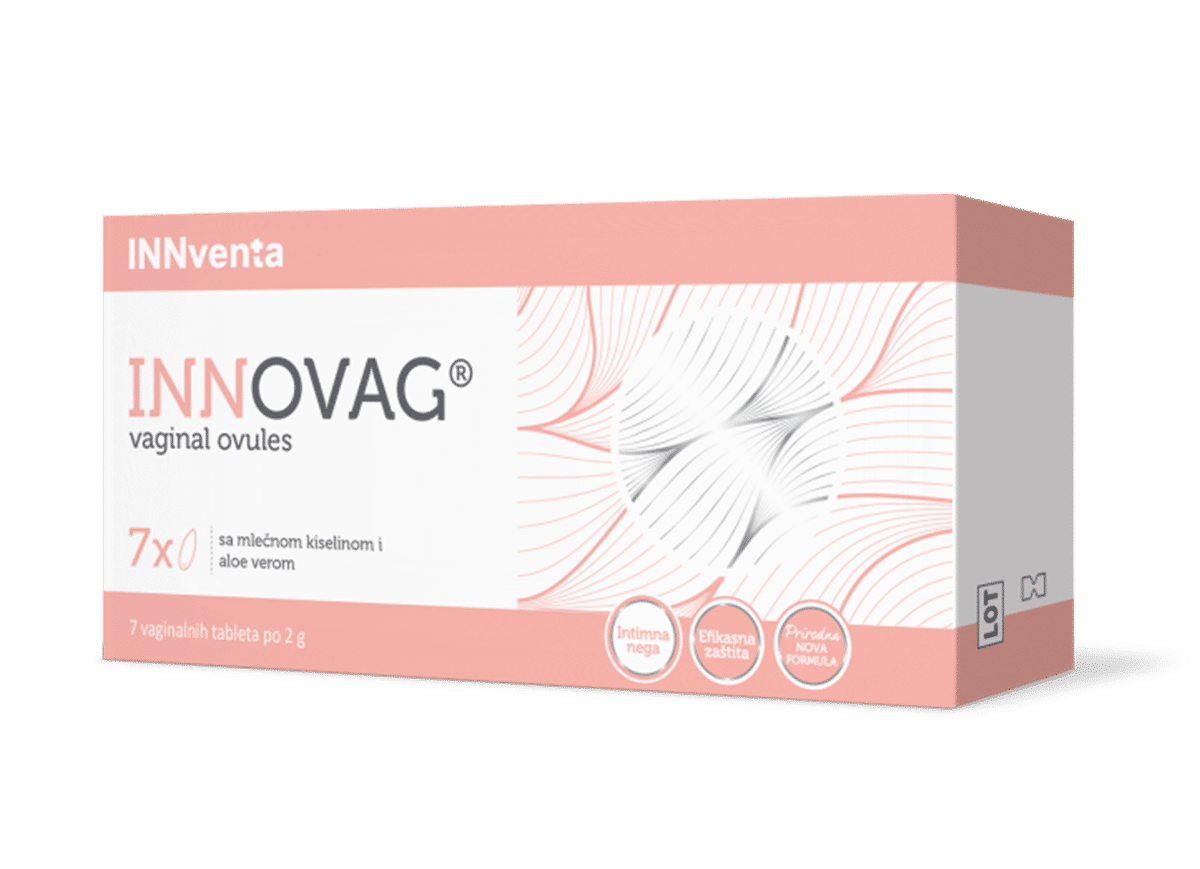
INNOVAG®

INNOVAG® vaginal ovules with protective, restorative and soothing effect are recommended for the treatment and prevention of vaginosis and bacterial and fungal vaginitis. A unique formulation with chlorhexidine produces potent antiseptic effect on bacteria and fungi and thanks to the presence of natural extract of propolis rich in polyphenols, lactic and hyaluronic acid, INNOVAG® vaginal ovules promote regeneration of vaginal mucosa.
Chlorhexidine belongs to a group of compounds with strong local antiseptic action, which effectively prevents the growth and development of a large number of bacteria, fungi and viruses. Thanks to the unique mechanism of action, chlorhexidine binds to the cytoplasmic membrane of bacteria, fungi and certain viruses, leading to the decomposition and death of harmful microorganisms, thus reducing the symptoms and signs of inflammation. The sensitivity of many microorganisms to the action of chlorhexidine is high, and is not reduced by continuous topical use.
Propolis extract effectively prevents the growth and development of microorganisms, reduces inflammation of the vaginal mucosa, without adverse effects on the “good bacteria” of the vaginal microflora. Thanks to the presence of polyphenols, it contributes to improvement of the local immunity of the vaginal mucosa and increased body’s natural resistance.
Hyaluronic and lactic acid, together with aloe extract and vitamin E, form a protective barrier on the surface of the vaginal mucosa, which prevents the development of new infection, contributes to hydration, regeneration and faster wound healing, especially after surgery.
The synergistic effect of active principles ensures the renewal of the vaginal microflora and the establishment of optimal pH values of the vaginal mucosa.
In which conditions is the use of the product INNOVAG® vaginal ovules recommended?
- Alleviation of itching, tingling and unpleasant odour that occur as a result of vaginal infection
- Prevention of infections before and after surgery
- Restoration of damaged vaginal mucosa and faster healing of wounds
- Impaired balance of vaginal microflora due to infection, diabetes or stress
- Maintaining the optimal pH value of the vagina
Why INNOVAG®?
- Prevents and treats acute and recurrent bacterial and fungal vaginitis
- Reduces inflammation and symptoms such as itching, tingling and unpleasant odour
- Prevents infections before and after surgery
- Regenerates and hydrates the vaginal mucosa and enables faster wound healing
- Restores the vaginal microflora and maintains the optimal pH value of the vagina

What do INNOVAG® vaginal ovules contain?
Active ingredients: | 1 vaginal ovule (2 g) |
|---|---|
Sodium hyaluronate | 4 mg |
Aloe leaf extract (Aloe barbadensis L.) | 2 mg |
Propolis extract (Pole S.) | 4 mg |
Tocopherol acetate | 1 mg |
Lactic acid | 1,94 mg |
Chlorhexidine hydrochloride | 1 mg |
Method of use and length of application:
Wash your hands carefully, take out one vaginal ovule and insert it deep into the vagina in a supine position, before bed.
INDICATIONS | Length of administration |
|---|---|
Prevention and treatment of vaginosis and bacterial and fungal vaginitis Prevention of recurrence of vaginal infections of bacterial and fungal origin Establishing and maintaining the optimal pH value of the vagina | 7 days |
Before surgeries | According to the doctor’s advice
|
After surgeries | 14 days |
One vaginal ovule once a day.
Administration in pregnancy: INNOVAG® vaginal ovules can be used during pregnancy after consulting a doctor.
Notes: The product is clinically tested, free of parabens and thiazolinones, odourless, colourless and silicone free.
Packaging: 7 vaginal ovules.